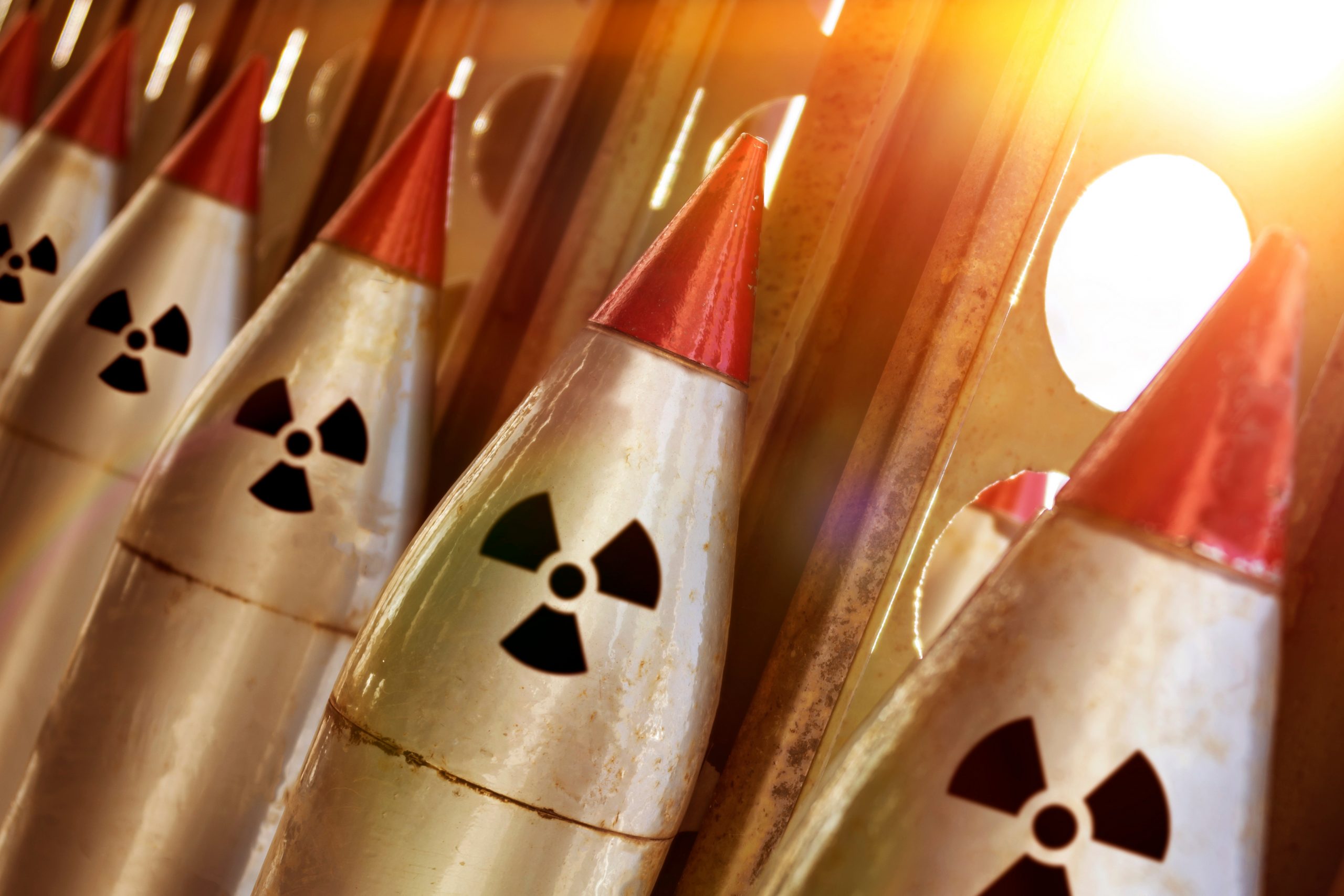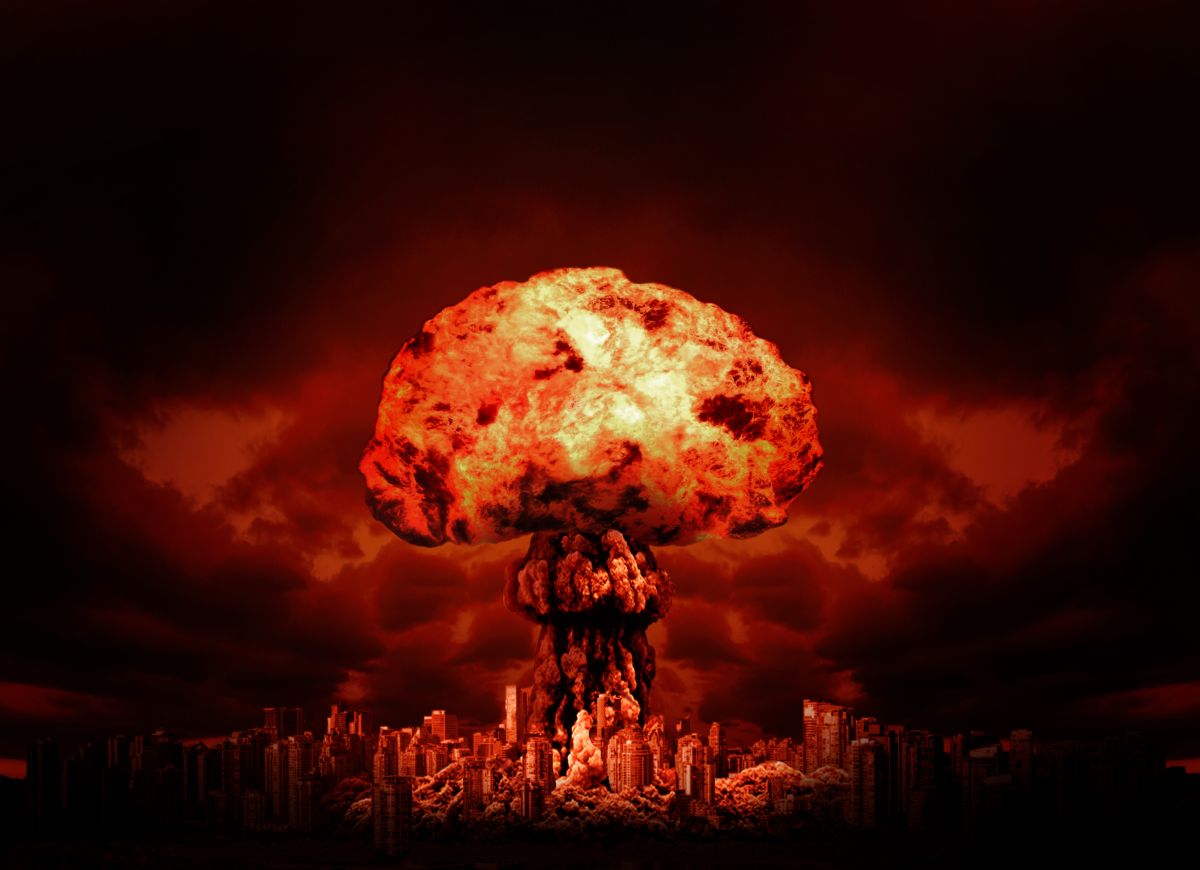
© Shutterstock
Shahzad Ahmed, London, UK
Warfare has significantly evolved over centuries, becoming increasingly sophisticated and destructive. The 20th-century discovery and weaponisation of nuclear energy marked a turning point, vastly amplifying the lethality of modern arsenals. While the devastation of Hiroshima and Nagasaki is well known, today’s nuclear weapons are said to be thousands of times more powerful.
Remarkably, over 1,400 years ago – when battles were fought with swords and spears – the Holy Qur’an made a striking prophecy that appears to foreshadow this unimaginable advancement in warfare.
‘Woe to every backbiter, slanderer,
Who amasses wealth and counts it over and over.
He imagines that his wealth will make him immortal.
Nay! he shall surely be cast into the hutamah.
And what should make thee know what the hutamah is?
Allah’s fire as preserved fuel,
Which will leap suddenly on to the hearts.
It is locked up in outstretched pillars to be used against them.’[1]
According to the Arabic lexicon, hutamah means to ‘pulverise into extremely small particles’ and another meaning is ‘the smallest insignificant particle.’ [2] Yet, despite hutamah being described as a particle that exists in its most minute form, it is said to contain the potential of an enormous blazing fire within it; a fire which is like no other for it will directly seize the heart before even burning the exterior flesh, muscle and bone. All the while, this raging and utterly destructive fire is locked up in what appears as outstretched columns.

© Shutterstock
Reading these Qur’anic verses in the 21st century, whereupon the discovery of the atomic structure is indeed crucial in our understanding of how exactly atoms work, it wouldn’t take much effort on the part of the reader to realise that this of course is a perfect description of modern-day nuclear weapons.
The fundamental concept of a nuclear explosion is nuclear fission, where the nucleus of the atom splits, releasing enormous amounts of energy. The resulting force of the explosion and intense heat would undoubtedly wreak cataclysmic levels of destruction due to the release of neutrons, X-rays and gamma rays, but far swifter would be the intense release of pressure that would leap out and its sheer force would strike the hearts dead – precisely as described by the Holy Qur’an.
The final verse of the chapter describing the outstretched pillars in which this fire is locked in could not be a more apt and accurate description of the cylindrical and spherical-shaped metal casing of these nuclear bombs. Interestingly, the Fourth Worldwide Head of the Ahmadiyya Muslim Community, Hazrat Mirza Tahir Ahmad (rh), in his commentary of this verse explained that the ‘extended columns’ also refer to the physical phenomenon of the atomic explosion itself as he states that ‘nuclear experts describe the state of a critical mass which is about to explode, as something elongating and pulsating with the immense pressure built within it. This pressure is caused by the elongation of the nuclei before they burst.’[3]
Lastly, another sublime feature of this great prophecy is with regard to the people who will be subjected to this fire, describing them as those who amass their wealth and are immersed in material gains. Considering the fact that 90% of the world’s nuclear warheads are currently owned by USA and Russia [4]– with others including China, France and the UK, it is hardly a coincidence that these are the very nations devoid of spirituality and completely blind in their pursuit of wealth that it has ultimately brought the world to the brink of nuclear destruction.
Thus, in a world where science and technology have pushed the boundaries of warfare to unprecedented extremes, it is profoundly thought-provoking that a scripture revealed over 1,400 years ago could so vividly encapsulate the destructive essence of modern nuclear weapons. The Qur’anic imagery of the hutamah – a minute yet intensely powerful force that strikes directly at the heart, locked within extended pillars – uncannily mirrors the science of atomic fission and the design of nuclear warheads.
But beyond its striking parallels to modern weaponry, this prophecy also serves as a sobering moral reflection. The Qur’an does not merely describe the mechanics of destruction – it critiques the very mindset that leads to it: materialism, arrogance, and a false sense of invincibility born from wealth and power. Today, the nations that dominate the global nuclear arsenal are often the very ones driven by these pursuits, with little heed paid to spiritual or moral consequences.
Thus, the prophecy of hutamah is more than a scientific marvel; it is a divine warning. It is a call to humanity to not only recognise the devastating power it now wields, but to also confront the moral decay that fuels it. In understanding this verse through the lens of modern reality, we are reminded that true progress lies not just in technological advancement, but in the wisdom and humility to wield such power responsibly.

ENDNOTES
1. The Holy Qur’an, 102:2-10.
2. Hazrat Mirza Tahir Ahmad (rh), Revelation, Rationality, Knowledge & Truth (Tilford, Surrey: Islam International Publications Ltd., 1998), 613-614.
3. Ibid.
4. “Which Countries Have Nuclear Weapons?” ICAN. https://www.icanw.org/nuclear_arsenals




Add Comment